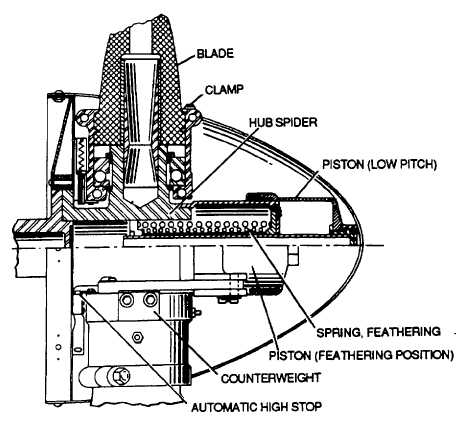TM 1-1500-204-23-5
Figure 2-2. Hartzell Constant-Speed Propellor
b. Thermal Efficiency. The thermal efficiency of an
engine is the ratio of the heat developed into the useful
work to the heat energy of the fuel. It may be based on
either brake horsepower or indicated horsepower. It can
be expressed by the following formula:
Indicated
horsepower x 33,000
Thermal Efficiency = Weight of fuel burned per
minute x Heat value (Btu) x 778
c. Volumetric Efficiency. Volumetric efficiency is
the ratio of the volume of fuel-air charge, burned by the
engine at atmospheric pressure and temperature, to the
piston displacement. If the cylinder of an engine draws in
a charge of fuel and air having a volume at standard
atmospheric pressure and temperature which is exactly
equal to the piston displacement of the cylinder, the
cylinder has a volumetric efficiency of 100 percent. It can
be expressed by the following formula:
Volume of charge at
atmospheric pressure
Volumetric efficiency = Piston Displacement
2-7. Propeller Defects. Propeller defects are defined in
table 2-2.
2-8. Troubleshooting Procedures. Troubleshooting
procedures for isolating and correcting various troubles in
the propeller system are found in applicable maintenance
manual.
2-9. Propeller Removal, Cleaning, and Inspection.
General procedures for propeller removal, cleaning, and
inspection are described in the following paragraphs.
a. Propeller Removal. Propeller removal is
explained in the applicable maintenance manual.
WARNING
Dry cleaning solvent is flammable and
solvent vapors are toxic. Use P-D-680,
Type II Solvent in a well-ventilated
area. Keep away from open flames.
Avoid prolonged solvent contact with
skin.
2-5

